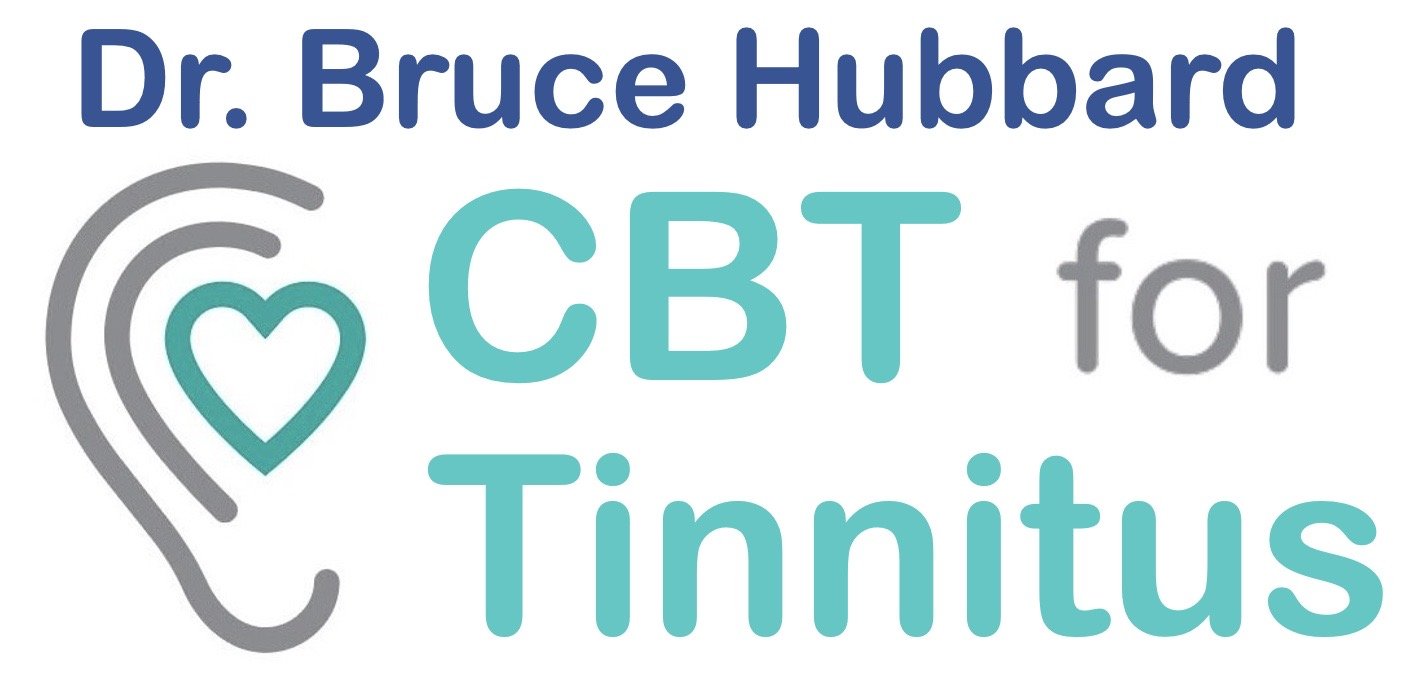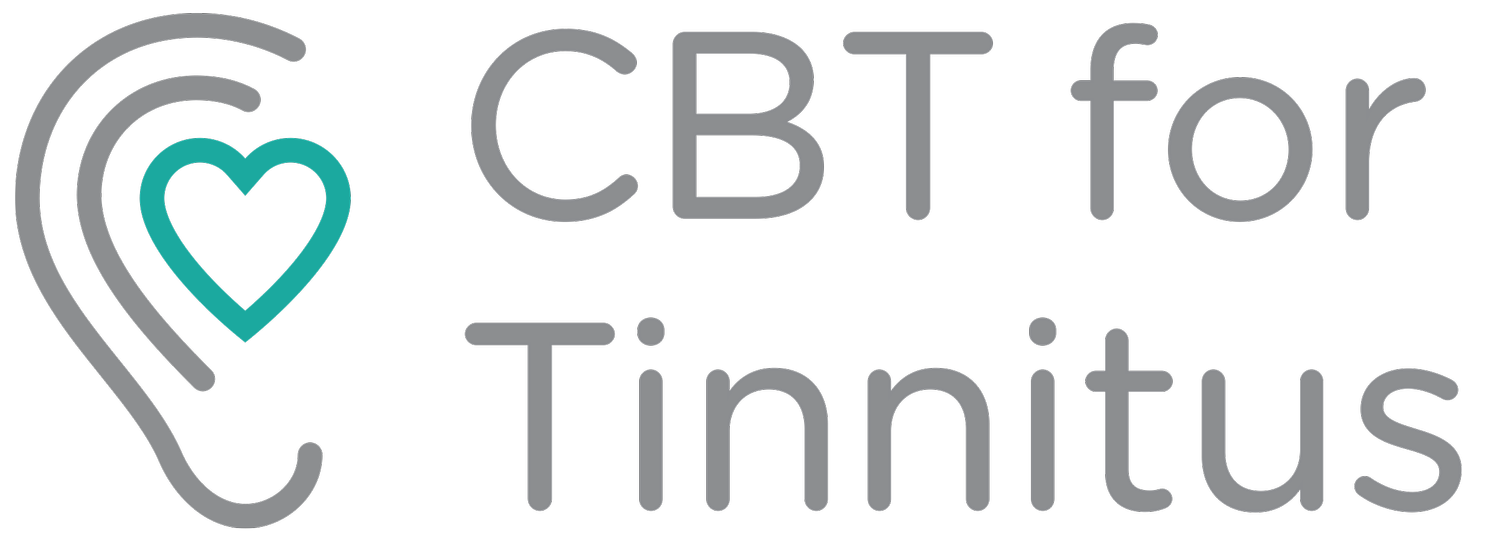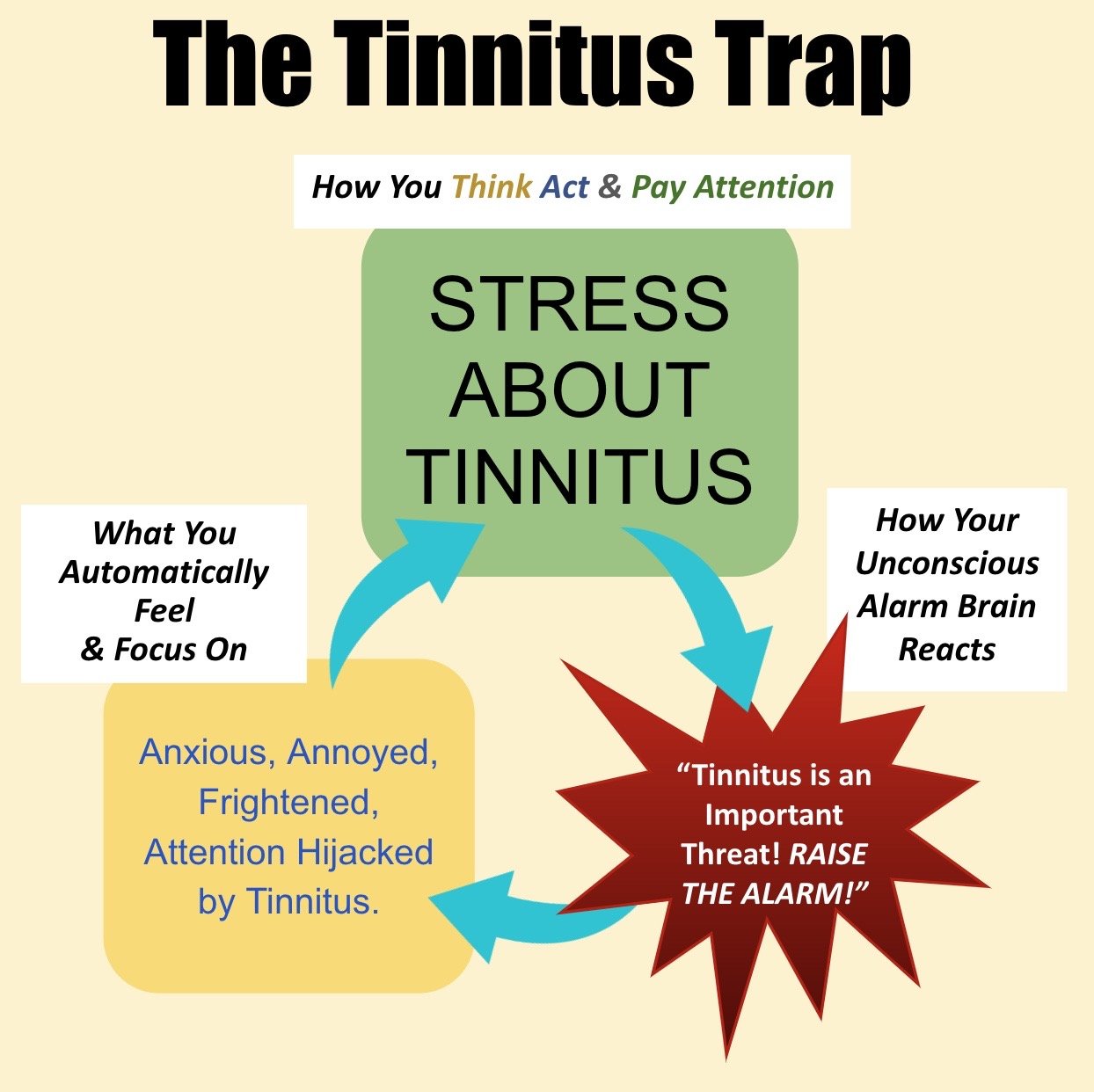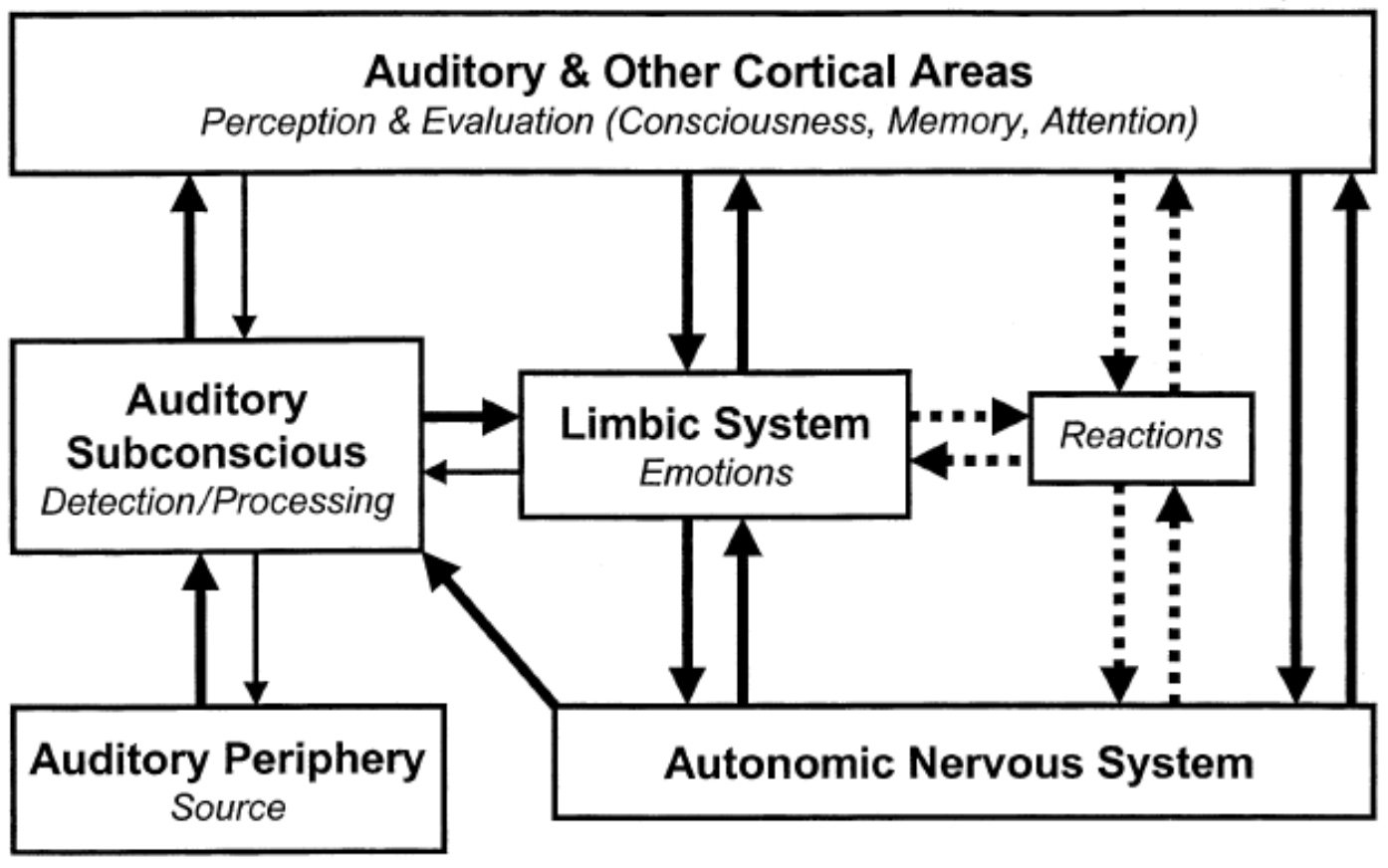CBT versus TRT: What’s the Difference and Which is Right for You?
Cognitive Behavior Therapy (CBT) and Tinnitus Retraining Therapy (TRT) share much in common, but are ultimately very different approaches to tinnitus. I’m going to provide a quick review of these approaches to help you decide what’s right for you.
How CBT and TRT Explain Tinnitus Distress
The theory of what causes tinnitus distress is roughly the same for both treatments. This theory was first proposed by psychologist Richard Hallam, who suggested that the natural course of a person with tinnitus is habituation. Tinnitus habituation is a natural, neurological process that occurs as the unconscious, alarm brain (part of the limbic system) gradually learns that the tinnitus sound is unimportant and reduces the automatic reaction - fear, annoyance and close attention to tinnitus. Habituation makes it easier, often a lot easier, to live with tinnitus. At its highest level, habituation is a cure for tinnitus!
Habituation makes tinnitus sound like a pretty simple problem to solve. But we know that for about one in four of us, myself included, it's more complicated. Instead of shrugging tinnitus off and getting quickly to habituation, we spike a strong and persistent distress reaction. We worry and ruminate about hearing tinnitus, about our future with tinnitus. Tinnitus affects our sleep, ability to concentrate, to let go and feel like ourselves.
According to Hallam, this response drops us into a habituation-blocking vicious cycle where 1) the more we stress about having tinnitus, 2) the more we unintentionally stimulate the alarm brain's negative reaction to tinnitus, 3) the worse we feel about tinnitus, 4) the more we stress about tinnitus. And around and around we go! I call this vicious cycle The Tinnitus Trap.
Diagram of the Vicious Cycle of Tinnitus Distress - The Tinnitus Trap - Bruce Hubbard
Pawel Jastreboff, the founder of Tinnitus Retraining Therapy, later proposed a similar theory, calling this vicious cycle the “Neurophysiological Model.” In my opinion, the Neurophysiological Model is a more complicated version of the Tinnitus Trap.
Neurophysiological Model - Pawel Jastreboff
How the Treatments Help
Both models propose that we can break out of the Tinnitus Trap, promote tinnitus relief and habituation, by retraining our unconscious alarm brain to interpret tinnitus as “unimportant sound.” How this goal is accomplished is where CBT and TRT diverge.
Tinnitus Retraining Therapy (TRT)
TRT uses two strategies to promote tinnitus relief and habituation. First, the TRT practitioner, typically an audiologist, provides counseling about the Neurophysiological Model, emphasizing the need to calm down and get your attention off tinnitus. The audiologist may meet with you for additional counseling every few weeks or months to reinforce this perspective.
The primary treatment agent in TRT is ear-level sound enrichment, otherwise known as “tinnitus maskers.” These are small devices that fit behind the ear and deliver a constant feed of soothing “masking” sound. The purpose of this sound is to distract you from tinnitus, help the tinnitus “blend” into a background of sound, to help you calm down and get your attention off tinnitus and back onto your life. Because masking sound is the primary tool in TRT, the audiologist emphasizes that this should be kept on at all times. The advice is to “never be in silence”, and “never listen to your tinnitus.”
When done correctly, the audiologist follows you over the first one to two years to adjust down the volume of the “maskers” as habituation progresses. Eventually, when you achieve full habituation, the maskers are no longer needed.
Pros:
When done correctly, TRT is a true set-it-and-forget-it form of tinnitus relief. The goal is to find a sound that helps, keep that sound playing 24/7, forget about tinnitus and focus on your day to day life.
Because TRT is a passive approach to tinnitus, there is no requirement to learn, practice and apply new skills, which reduces the time and effort devoted to treatment.
Cons:
Routine claims that the TRT is “evidence-based” and gets an “85% improvement rate” are not backed up by research. US ENT tinnitus guidelines warn against the high cost of an unproven treatment, and caution TRT proponents against “instilling false hope.”
TRT is a “one size fits all” approach to tinnitus. There is little room to adjust the treatment to address individual needs. That includes the wide range of tinnitus sounds and patterns. For example, people who have more than one sound, or a sound that varies in volume, may need different masking patterns and volumes to address the different versions of their tinnitus. If your tinnitus is reactive to external sounds, the constant masking may make it louder. If you have hyperacusis (sound sensitivity) along with tinnitus, which occurs in about a third of cases, then the hyperacusis must be addressed first, delaying treatment for tinnitus and prolonging distress.
The recurring “counseling” sessions are an important part of TRT, however, audiologists are not trained counselors. Some may have more natural talent than others but it will be hit or miss.
TRT does not address anxiety, insomnia and depression, which are common complaints with tinnitus. As a result, these problems often go untreated.
TRT is very expensive, costing between $3000 and $5000 USD. This is three to four times the typical cost of CBT. Also, there are much cheaper ways to access TRT through common bluetooth devices and mobile streaming (see below).
Cognitive Behavior Therapy (CBT) for Tinnitus
I am a highly trained, experienced cognitive behavior therapist who has suffered with and fully habituated to tinnitus. My unique status is reflected in my CBT for tinnitus program, which is different in several ways from other currently available CBT programs. Because I have tinnitus, I understand the value of habituation, and feature this as an outcome of treatment. Other programs have gotten away from Hallam’s original habituation model, and barely touch on habituation if at all. Their goal instead is “tinnitus management,” helping you cope with your tinnitus as an ongoing burden. I am also informed by the latest CBT research and incorporate elements of acceptance and mindfulness as important parts of treatment.
As with TRT, I educate you about the tinnitus trap and how to break free. However, that’s where the similarity ends. My program consists of clinically proven strategies for tinnitus, including Flexible Thinking, Mindfulness, and Taking Committed Action to fully rejoin life. Rather than avoiding hearing tinnitus, the goal is to learn to hear tinnitus “effectively”, that is, without being distracted by negative thinking and urges to make it stop. Sound therapy, then, can be minimized and is used only as needed, usually for sleep and concentration, then faded out after a few months. And I provide close guidance and advice on fully resuming your pre-tinnitus lifestyle, including use of earplugs to safely enter louder settings. The following diagram sums up the approach:
Breaking Free of Tinnitus - Bruce Hubbard
Pros:
At present, CBT is the only true clinically proven (evidence-based) treatment for tinnitus and the only tinnitus treatment recommended by US and European tinnitus clinical guidelines.
CBT is much less expensive than TRT. A thorough self-help book (the only one I recommend) sells for $125 USD. A single CBT coaching session with me costs $250 USD. Two to four sessions are often sufficient to get a person on track toward habituation. My CBT for tinnitus online course with weekly group coaching costs $1000 USD and includes two 1:1 coaching sessions as well.
CBT is an action-oriented approach to tinnitus that puts you back in control of your life. You’re not just putting in maskers and waiting for habituation to occur. You learn practical strategies, things you can do to regain control of attention, to help with sleep, concentration, letting go and relaxing and safely reentering louder settings.
A thorough CBT for tinnitus program includes evidence-based methods for addressing sleep and concentration and for reducing anxiety and depression, which so often occur with tinnitus.
CBT is well suited to flexibly addressing the full range of tinnitus variability and reactivity, as well as the sound sensitivity (hyperacusis) that often accompanies tinnitus.
CBT provides you with skills for life. Everything you learn can be applied to other areas of stress and trauma now or in the future.
Cons:
CBT does require an active commitment. Over the first few months, you will need to set aside an hour or so a day for learning, practicing and applying your new techniques. You’ll need to remind yourself to apply your new skills as you move through your day (and night) with tinnitus.
Which Tinnitus Treatment is Right For You?
If you have the money, and have no interest in learning a new system of coping strategies, then TRT may be the place to start. At its best, TRT is a simple approach which helps many people forget about tinnitus and quickly get back into life. Because it has unclear effectiveness, be sure you have the option of returning the maskers, which constitute the bulk of the expense of TRT. And make sure your audiologist plans to help you taper off the background sound over the first one to two years in order to achieve full recovery.
A quick and simple method for trying TRT without the big investment is to purchase a pair of bone-conduction headphones or open-ear earbuds. These work identically to the more expensive tinnitus “maskers.” They are Bluetooth devices that allow you to stream from a smartphone any sound you find helpful. The Tinnitus Retraining Therapy Book: Walking You Through TRT, authored by highly regarded tinnitus expert James Henry, PhD, is a guide for the average person. And several free smartphone apps, like Resound Tinnitus Relief, provide a wide range of background sounds to get you started.
There are several reasons why you may prefer to start with CBT over TRT. From an effectiveness standpoint, compared to TRT, CBT is a much better bet at a much lower price point. If you want to learn new skills to feel in control of tinnitus, then CBT is for you. If you are experiencing anxiety, insomnia and/or depression along with tinnitus, then a thorough CBT for tinnitus program will address these problems as well.
In sum, both CBT and TRT are practical, intuitive methods for addressing the problem of tinnitus. Which approach you choose will depend on several factors. The important thing to remember is that you don’t have to be trapped with tinnitus. There are helpful strategies for getting out of your ears and back into your life!
© Copyright Bruce Hubbard / CBT for Tinnitus, LLC




